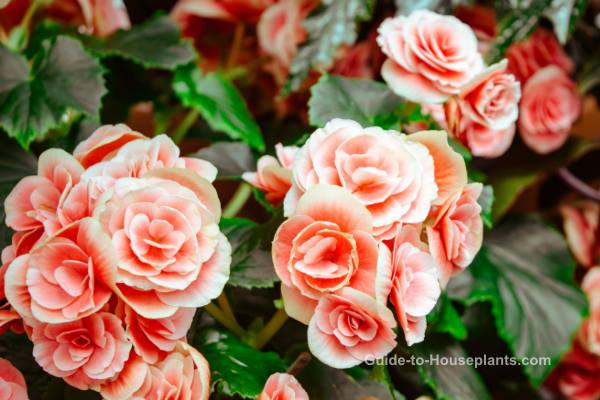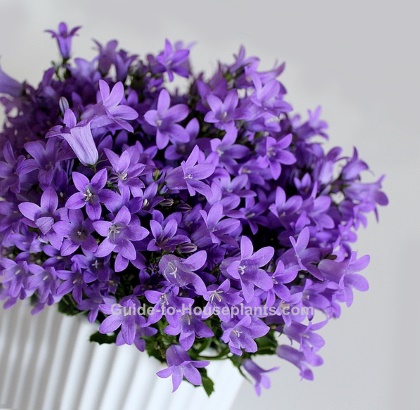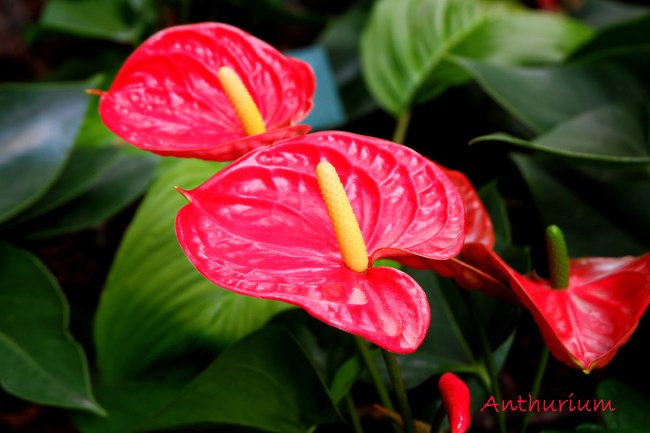Growing Tulips Indoors:
Steps to Forcing Tulip Bulbs
Botanical Name: Tulipa hybrids
By growing tulips indoors, you'll bring a bright bouquet of fresh flowers to your home in the middle of winter.
Forcing tulip bulbs is not quite as easy to do as some of the other flowering bulbs, but it's well worth the effort. Imagine the colorful, cheery flowers you'll enjoy long before spring arrives. The best time to plant tulips for mid-winter blooms is early October.
 You have an endless range of tulip varieties to choose, in gorgeous colors.
You have an endless range of tulip varieties to choose, in gorgeous colors.Tulip Varieties Best for Forcing Indoors
You have a gold mine of spectacular varieties to choose from -- in every color imaginable. Take your pick...many with double colors, double blooms, or frilly petals.
For growing tulips indoors, you can force any type of tulip bulb into bloom. However, some get pretty tall and will have to be staked to prevent them from falling over. T. batalinii and T. humilis are a couple tulip species that stay shorter, reaching only 6 in (15 cm) high.
Triumph tulips are among the most prized because of their big blooms, traditional tulip shape, and variety of colors available. Triumph tulips are also among the easiest to force into bloom indoors.
Buying Tip
Buy the biggest and best tulip bulbs you can find from a reputable company. After waiting for months for these beauties to bloom, you don't want to be disappointed. For sure success, buy varieties that are labeled "good for forcing."
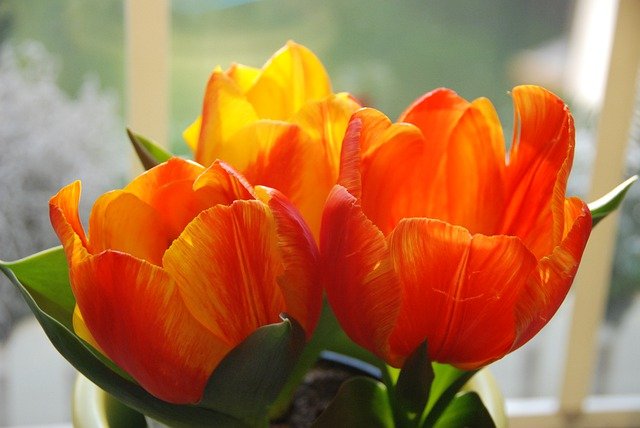
There are several varieties available that are especially dependable for forcing. I recommend the early-flowering types. You can choose single or double blooms, plain or striped.
Some tulips with single blooms include 'Apricot Beauty'... radiant 'Red Riding Hood'... and petite, yellow-and-red 'Guiseppe Verdi' that only reaches 6-12 in (15-30 cm) tall.
Double-flower varieties include peachy-pink 'Peach Blossom'... snowy-white 'Schoonoord'... and 'Orange Nassau' has orange-yellow blooms with a blush of red.
Planting Tip
Because each tulip variety tends to bloom at a different time, it's best not to mix them. You'll enjoy a mass of beautiful blooms by planting one tulip bulb variety per pot.
Steps for Forcing Tulip Bulbs Indoors
Before growing, tulips need a cold treatment for 10-12 weeks. If you bought pre-chilled bulbs, you can skip this step.
- Choose a wide pot about 6 in (15 cm) deep with drainage holes in the bottom. Fill the pot loosely with potting mix. Set bulbs side by side -- close but not touching -- pointed end up, so that their tips are even with the pot rim. By facing the flat sides toward the outside of the pot, the first leaves to grow will hang over the edge of the pot. Do not press the bulbs into the mix. It should be loose to allow the roots to grow through it easily. Cover with additional potting mix, just so their noses are barely covered.
- Water thoroughly and empty drainage tray.
- Move pot to a dark, cool, but not freezing (40-45°F/4-7°C) location such as a basement, unheated garage or refrigerator. Avoid storing bulbs near ripening fruit or vegetables because they give off ethylene gas which can damage the bulbs. Keep them in cold storage for about 10-12 weeks. Keep the medium barely moist.
- When shoots reach about 2 in (5 cm) tall, bring the pot out of cold storage and place the growing tulips in a slightly warmer (50°F/10°C) location with low light. Over the next few days, gradually move it toward a sunny window. (By moving it in small steps while it's growing, tulips will last longer.) Turn the pot every day for even growth.
When in full bloom, keep potted tulips in a bright location out of direct sun. Keep as cool as possible to prolong the bloom time.
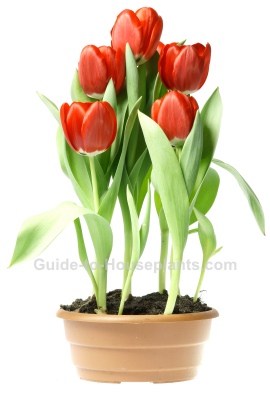
Tips for Growing Tulips Indoors
Origin: Asia
Height: 12-24 in (30-60 cm), depending on variety. Some species only reach 6 in (15 cm) tall.
Light: Bright indirect light. Rotate the pot once in a while because growing tulips will tend to lean toward the light source.
Water: Keep soil lightly moist, but not soggy. Growing tulips are thirsty, so it's a good idea to check the soil often.
Humidity: Average indoor (around 40-50% relative humidity). Indoor air can become extremely dry during the winter months. It's a good idea to use a humidity gauge, rather than guess. A cool-mist room humidifier is the most efficient way to boost humidity.
Temperature: Cool 60°F/16°C. Make your tulips last longer by keeping them in a slightly cooler location. Blooms will last for weeks if kept at a maximum of 60°F/16°C.
Soil: Good-quality, all-purpose potting mix
Fertilizer: Feed every 2 weeks with a balanced liquid fertilizer diluted by half.
Propagation: Tulip bulbs cannot be forced a second time indoors. They do produce offsets, but they can take a few years to mature. If you want to keep them, allow the foliage to die back naturally, storing tulip bulbs in a cool, dry place. Plant the bulbs in your flower garden in the fall and let nature take care of them. They'll bloom when they're ready.
